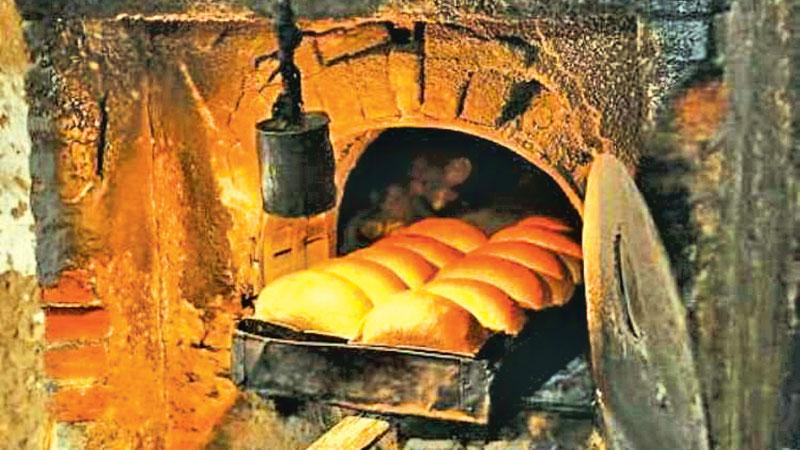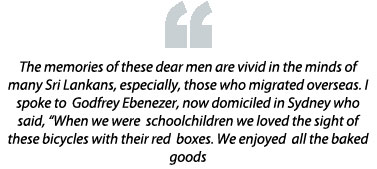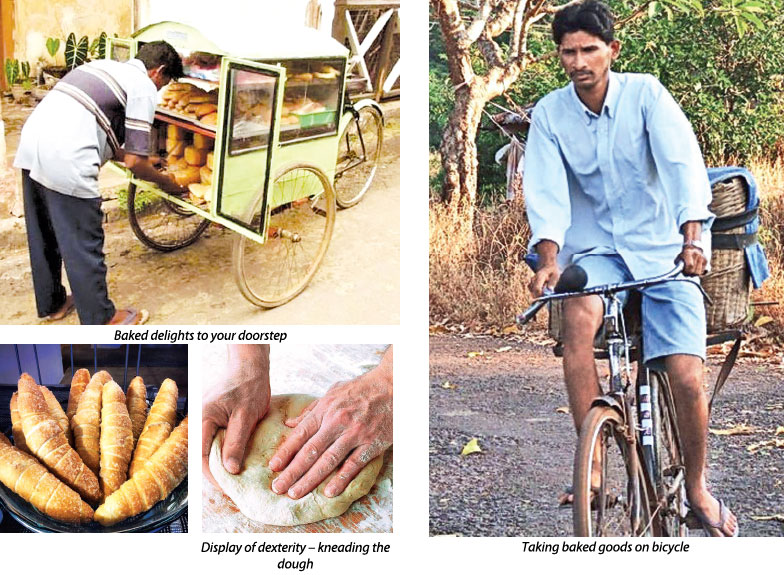
To those of us who can trace our childhood to the past three decades and beyond, one of the beautiful memories is the baker’s bicycle. The sight of a robust man, with the jolly proclamation of “paan paan” would trigger our taste buds at tea time. To our innocent minds he was a welcome visitor throughout the week, except on Sunday evening. His verbal sales pitch was accentuated with the ringing of the bicycle bell, which at times disturbed the resting dogs, and they in turn barked as he sped by. He was a man who influenced the moods of an entire neighbourhood , and was cheerfully greeted by the children. He cycled in the sun and rain, never did he complain.
 Today however, we have the comfort and convenience of modern bakeries, with an assortment of goodies. There are varieties of bread, to match the diagnosed medical requirements of every age group. You can take away your baked items in wrapped boxes as gifts. All this opulence did not exist when the baker’s cycle pedalled through Colombo and some of the major towns around the island.
Today however, we have the comfort and convenience of modern bakeries, with an assortment of goodies. There are varieties of bread, to match the diagnosed medical requirements of every age group. You can take away your baked items in wrapped boxes as gifts. All this opulence did not exist when the baker’s cycle pedalled through Colombo and some of the major towns around the island.
There is no period of recorded history to show when our ancestors took to baking bread and other goodies. We did have mastery of the clay oven but it was not used for pastry or patisserie making. We can only deduce that baking bread as we know the loaf, came to us from the Portuguese.
The Dutch enhanced our baking skills and the British empowered baking to such a level that it became part of our culinary requirement.
In this age of mechanized production the old bakeries are rare. I have witnessed one on Hill Street, in Dehiwela where a crew of men led by a senior baker still knead the dough by hand and turn out favourites like roast paan and kimbula bunnis.
Decades ago these bakeries were “happening” venues that not only baked the humble loaf, but also cakes. This was before the advent of the oven and the microwave. A key business strategy of these old bakers was that they brought their products to the customer’s doorstep.
Delight in every bite
The forerunners to the “bicycle baker” were resilient men who walked the streets carrying a basket on their heads, filled with baked delights. But as the customers’ demand increased, it gave way to the two wheeled sales. Hence, by 3pm the delivery bicycles began their predetermined routes. Their targeted peak sales hour was between 4pm and 5.30 pm. As the bicycle halted we were enticed to enjoy. The “box carrier” had a glass partition which gave the customer a view of what was for sale.

The first layer had buns oozing with cream, slices of butter cake, gnanakatha dusted with granulated sugar, doughnuts, jam tarts and slices of bibbikan- a local coconut infused delight enriched with jaggery. The second layer had the rolls and the succulent ‘maalu paan’- fish buns.
The lowest section of the box was the domain of bread: roast paan, the regular loaves and the ‘thambapu paan’ which is baked at a more controlled temperature than the regular loaves. Whatever was purchased was relished with a hot cup of ginger tea. Children and adults gathered round the baker. Occasionally he was offered a cup of tea by a kind lady. The baker remembered these homes and rang the bell a few more times, perhaps, finding some solace in being greeted by the alluring smile of a fair maiden! During Christmas these hardworking men were given a “tot”- as a sign of gratitude, a small portion of coconut arrack or brandy which was gulped down with glee. I recall an incident where a baker had indulged in too many” glasses of goodwill”, and fell into a deep drain, much to his embarassment.
Cycling into the sunset
The memories of these dear men are vivid in the minds of many Sri Lankans, especially, those who migrated overseas. I spoke to Godfrey Ebenezer, now domiciled in Sydney who said, When we were schoolchildren we loved the sight of these bicycles with their red boxes. We enjoyed all the baked goods.
The prices were very reasonable in that era. The baker had a social connection with the people down our lane. Today, I have access to mega bakeries, but somehow I don’t feel that chemistry we had with our bakers, who faithfully cycled down our lane. Similar sentiments were echoed by retired engineer Terry Jenorge who recalled ‘As children and teenagers we waited for the ringing of the cycle bell at tea time. It was the signal that the baker was coming. We would rush to the gate to meet him. Their products were limited in choice but of good quality.
These good old souls are no more in the city. Today, we have the concept of bakery items delivered by three wheelers referred to comically as “choon paan” with its annoying digital siren like melody. A few copy cat cycles roam, but lack the depth and efficiency of the yesteryear crew.
The bakeries of yesteryear actually fed the people physically and socially. As these carefree men cycled down they captivated the entire community. People engaged in conversation, shared a joke and enjoyed a hearty laugh as they ate in their gardens. Going back to my reference to cake baking, the old bakeries obliged their customers at Christmas by taking orders to bake rich cake, date cake and love cake. Ah how we relished the latter! As our cake trays were kept at the bakery, the head baker used a chalk to mark the trays.
The ladies were asked to return after 10pm and at times close to midnight. I have accompanied my mother and aunts on these culinary missions. The earnest wait at the bakery during these nocturnal hours were a rewarding experience, especially the conversations in dulcet tones with the pretty Burgher girls who are now baking somewhere in Australia or England.
The bakers and their delivery bicycles have faded into oblivion. In my travels I did encounter one baker cycling in Jaffna and another in Galle. The ringing of the bell has ceased. The bicycle is becoming a relic. The bright fires in the brick ovens have burned into memory.
